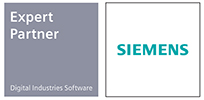Improving Profitability with Advanced Scheduling
By JoaoLaner
I started my journey with Siemens Opcenter Advanced Scheduling (formerly called Preactor) in 2008. I remember well my first contacts with this incredible tool. I thought it was wonderful to have the ability to do simple operations like drag and drop to move operations and production orders in a Gantt chart. I understood the complexities of production scheduling, but I was still discovering the universe of possibilities that an APS (Advanced Planning and Scheduling) tool could provide. And then, over time, I realized that simple capabilities in the tool generate surprising results very quickly.
As an Industrial Engineer, I was always fascinated by the capabilities of the tool as its flexibility allowed me to create different solutions according to the specific needs of each client based on their circumstance.
I began each new project with the question: How do I enable this client to make more money with a detailed production schedule?
Now, we well know that the goal of every for-profit company is to seek present and future profitability, and to grow and survive in today’s highly competitive market space. Goldratt reinforces this in his best seller, The Goal.
So how could I help my clients realize this goal through an APS tool deployment project?
There are many ways to improve profitability with Siemens Opcenter AS:
- Visibility
One of the main advantages of a visual APS is that it offers a clear view of the completion times of all Production Orders, whether they are fulfilling customer orders or replenishment of stocks. Knowing exactly when each operation and order is going to be completed days or weeks in advance, allows various strategic decisions to be taken that generate immediate results.
For example, knowing today that an order will be delayed several weeks, allows you to contact the customer and renegotiate the delivery terms. This client will then be able to organize in advance, feel valued, strengthening your relationship.
When the customer learns of the delay on the day delivery expected, it causes a series of problems.
- Holistic vision
Imagine the situation where the production process has many steps and the order sequencing is done by separate individuals for each manufacturing process. While each machine operator might know his production process best and therefore know how to minimize that machine’s setups, scheduling each machine independently leads to sub optimized results. Because the machines are different throughout the process, and because the criteria and attributes that define the setups are different, the production order identified to be first in the sequence at one machine can easily become the last of the sequence in a subsequent machine leading to increased production lead times and higher in-process stock.
Using APS software enables the production scheduling team to generate scheduling scenarios that balance minimization of setups against other requirements using algorithms that enable better global results than is achieved when optimizing the schedule of each machine independently. This allows for better use of productive resources, increased productivity and reduced in-process inventories.
- Multiple Finite Constraints
A very common way to boost profits with APS software is to learn how to account for the use of other finite restrictions of the production process, such as tools, labor, or other restrictions. Understanding the bottlenecks that prevent good flow on the factory floor, acting in advance for the early release of a tool that will be needed next week, or moving operators from one activity to another based on the production mix, among other aspects, can reduce or eliminate unnecessary overtime and unexpected idle time.
This is a topic that intrigues me, because you can use the APS tool to do more advanced analysis, such as, what would be the impact on production of buying a new tool, of hiring a new person, or of training an individual on a new skill? Simulations such as this are simple and easy to do and bring a new perspective to the decision-making process.
- Materials Management
Often the availability of materials is crucial to ensuring a good production schedule. Imagine releasing a schedule to production and then discovering that you don’t have the necessary materials available minutes before you were to transition production!
With an APS solution you can guarantee that all the material requirements will be met before the scheduled production start time. At the same time, the greater precision of production start times allows you to order materials to arrive just in time, minimizing your purchased material inventory. This then leads to the possibility of better agreements with suppliers, cost reduction and better cash flow.
These are significant gains that can be obtained with Advanced Scheduling and planning software using standard basic functions. It is not necessary to create complex rules to start seeing an immediate return on investment.
Once you have achieved the quick and easy improvements to profitability you can come back for a phase two, pursuing more complex project. Such projects might include: providing customer service with the ability to make promises based on actual availability in the factory or using advanced simulations to rethink your production layout, thereby freeing up 30% of your manufacturing space and drastically reducing your production lead times. But these are subjects for another time.







